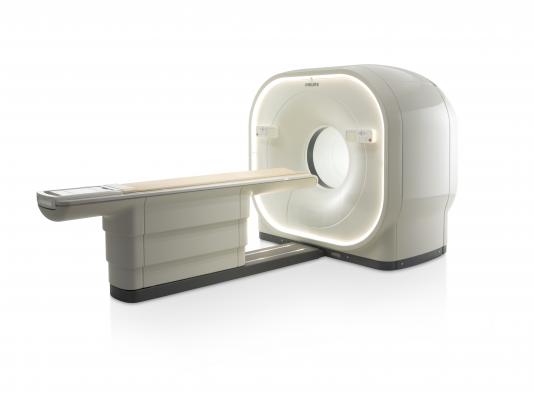
June 14, 2016 — Philips announced it would be showcasing a variety of nuclear imaging solutions at the Society of Nuclear Medicine and Molecular Imaging (SNMMI) 2016 Annual Meeting, June 11-15 in San Diego.
Nuclear medicine technology has significantly evolved over the years – growing from scanner-only equipment to solutions that integrate quality, quantification and analytics. Ten years ago, also in San Diego, Philips introduced the first commercial time-of-flight positron emission tomography (PET)/computed tomography (CT). Over the last decade, this technology has continued to improve and today, time-of-flight is faster, better and digital. This year, over 20 oral and poster sessions featuring Philips’ digital photon counting PET system will be presented at the SNMMI meeting, highlighting the technology’s full range of capabilities and Philips’ work with academic partners.
“The Wright Center of Innovation team at The Ohio State University and Philips have been very successful partners in the clinical evaluation of the next-generation digital PET/CT,” said Michael V. Knopp, M.D., Ph.D., professor of radiology at The Ohio State University Wexner Medical Center. “In this year’s SNMMI Annual Meeting, we will present over 20 scientific presentations and posters on these efforts demonstrating performance and benefits of PET digital photon counting in the areas of lesion detectability, radiation dose management and quantitative imaging.”
As our population continues to age and exponentially grows in the coming years, coinciding with the prevalence of multiple chronic and complex diseases such as cancer, dementia and cardiac diseases, health imaging will require a more integrated and interdisciplinary approach toward treatment. Given the unique clinical insights it provides, molecular imaging will play even more of a critical role in addressing complex diseases – as a result, the advanced data and analytics found in these technologies will be essential to improving patient care.
Philips’ SNMMI exhibit will feature the latest solutions and technologies driving nuclear medicine, and will highlight the following milestones:
- A decade of Time of Flight – Today, time-of-flight is available in products such as Vereos, which Philips calls the world’s first fully digital PET/CT. Time-of-flight technology is now bridging innovation with digital architecture available in Philips solutions.
- Advanced data sharing – Data sharing gives physicians the power to visualize, diagnose and communicate across clinical domains and imaging modalities with one automated workflow. Philips’ latest edition of its advanced data sharing, analytics and visualization platform, Intellispace 8.0, helps physicians detect, diagnose and follow up on treatment of diseases, offering a comprehensive advanced visualization suite for multimodality tumor tracking, characterization and assessment.
- Flexibility of PET/CT – Philips PET/CT systems allow physicians to go beyond current limitations in standard PET/CT imaging, with capabilities such as digital imaging, and can now meet a wide range of clinical and economic needs in CT lung cancer screening.
For more information: www.philips.com


 July 30, 2024
July 30, 2024 








